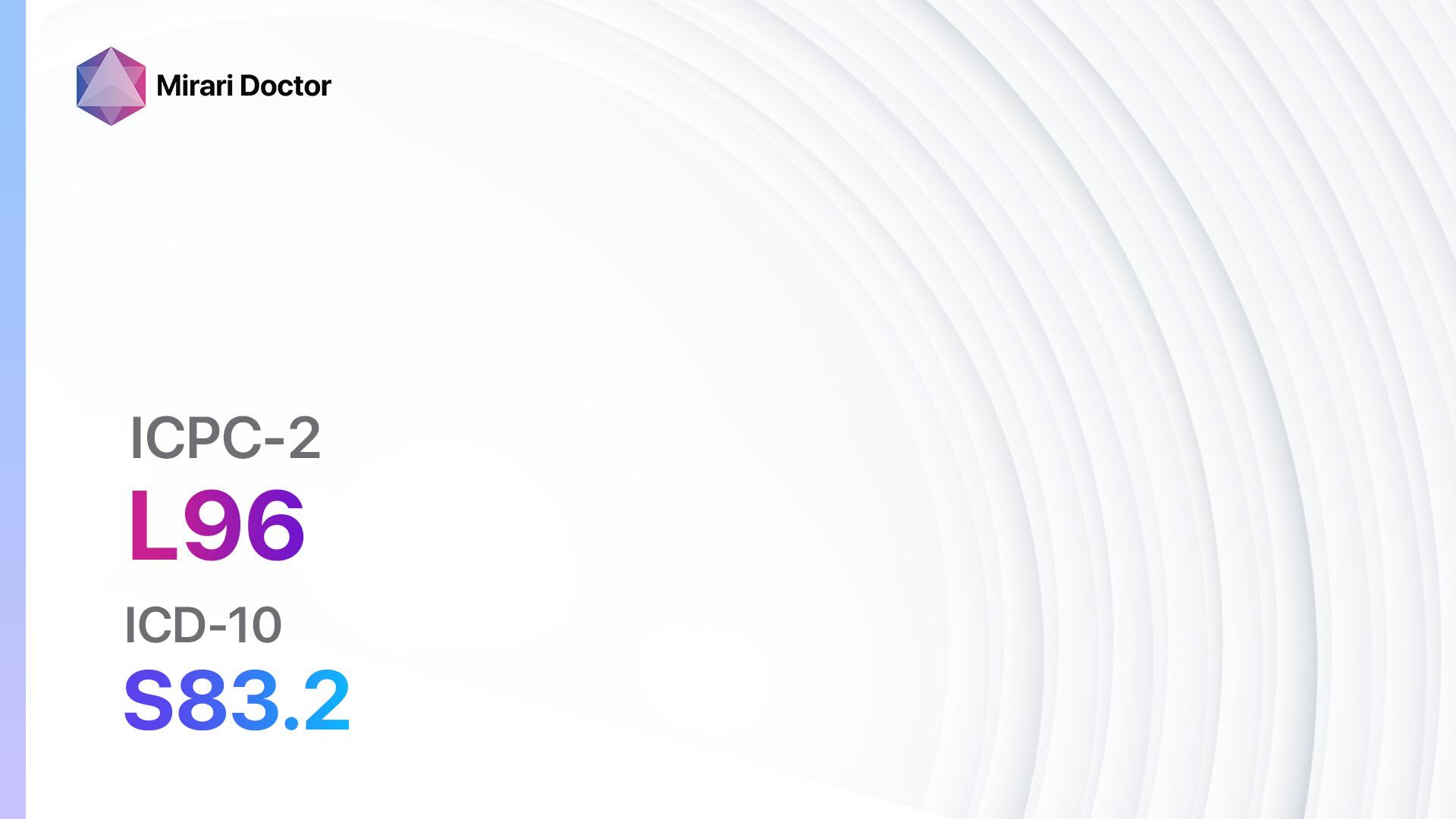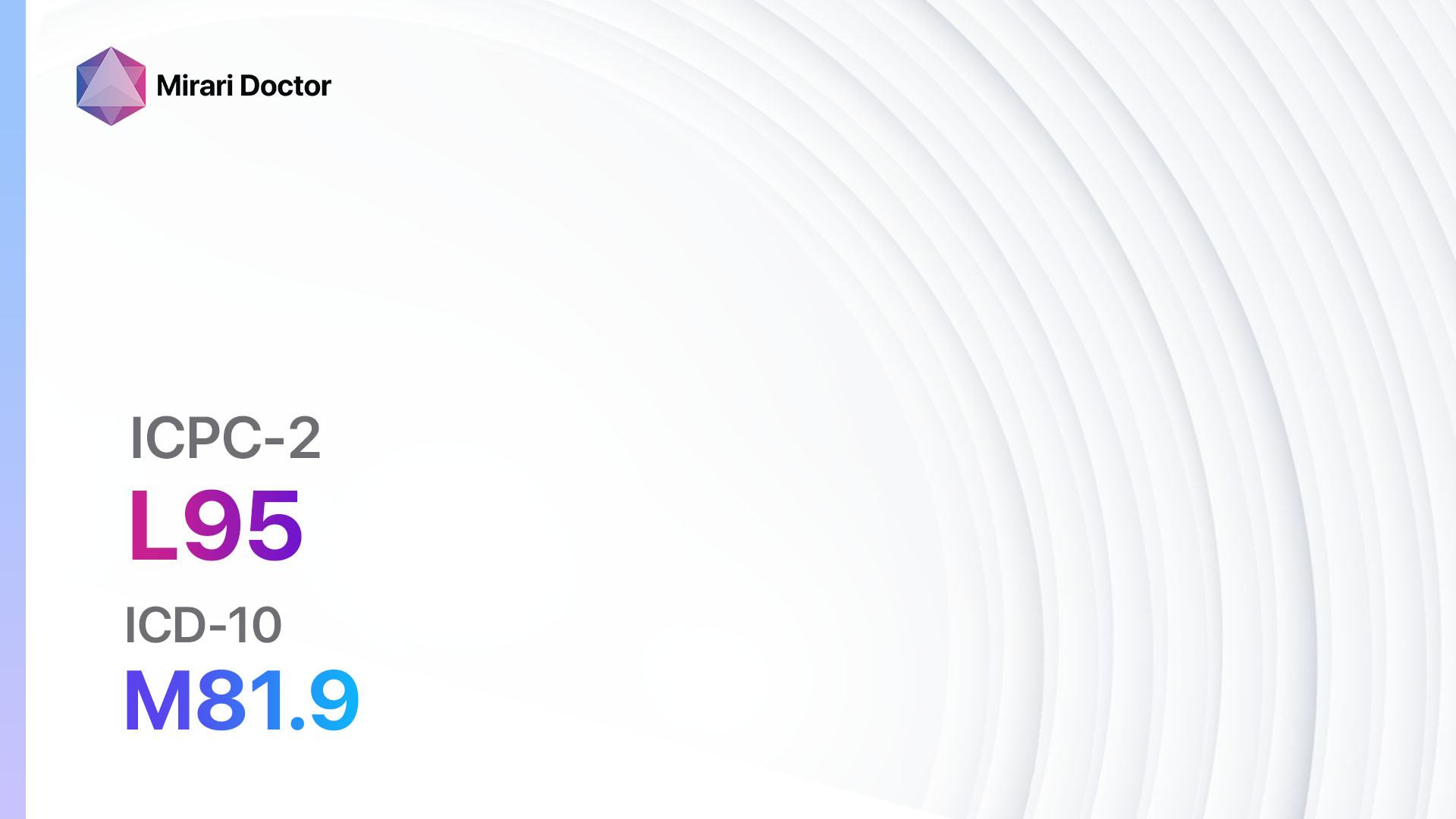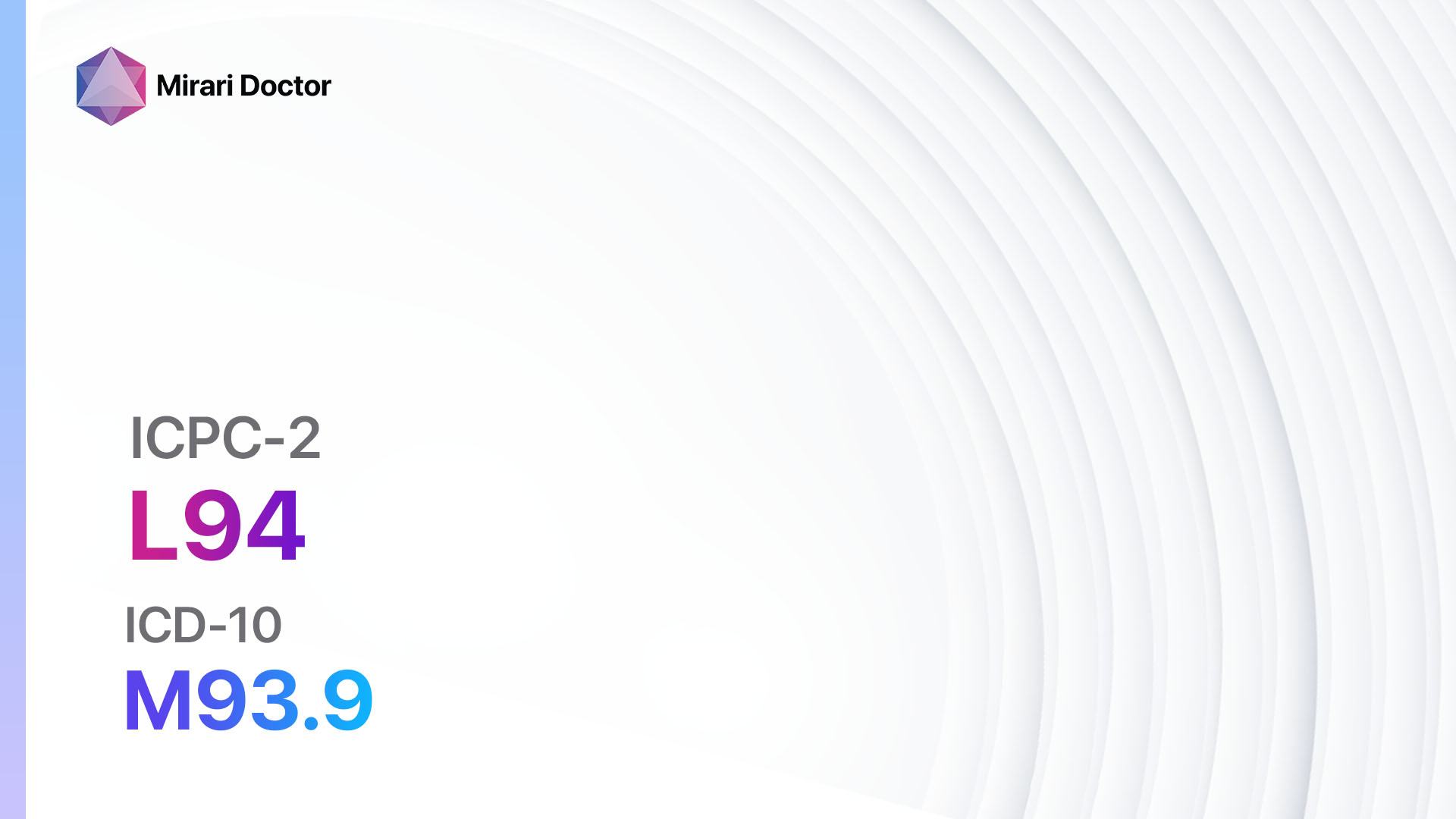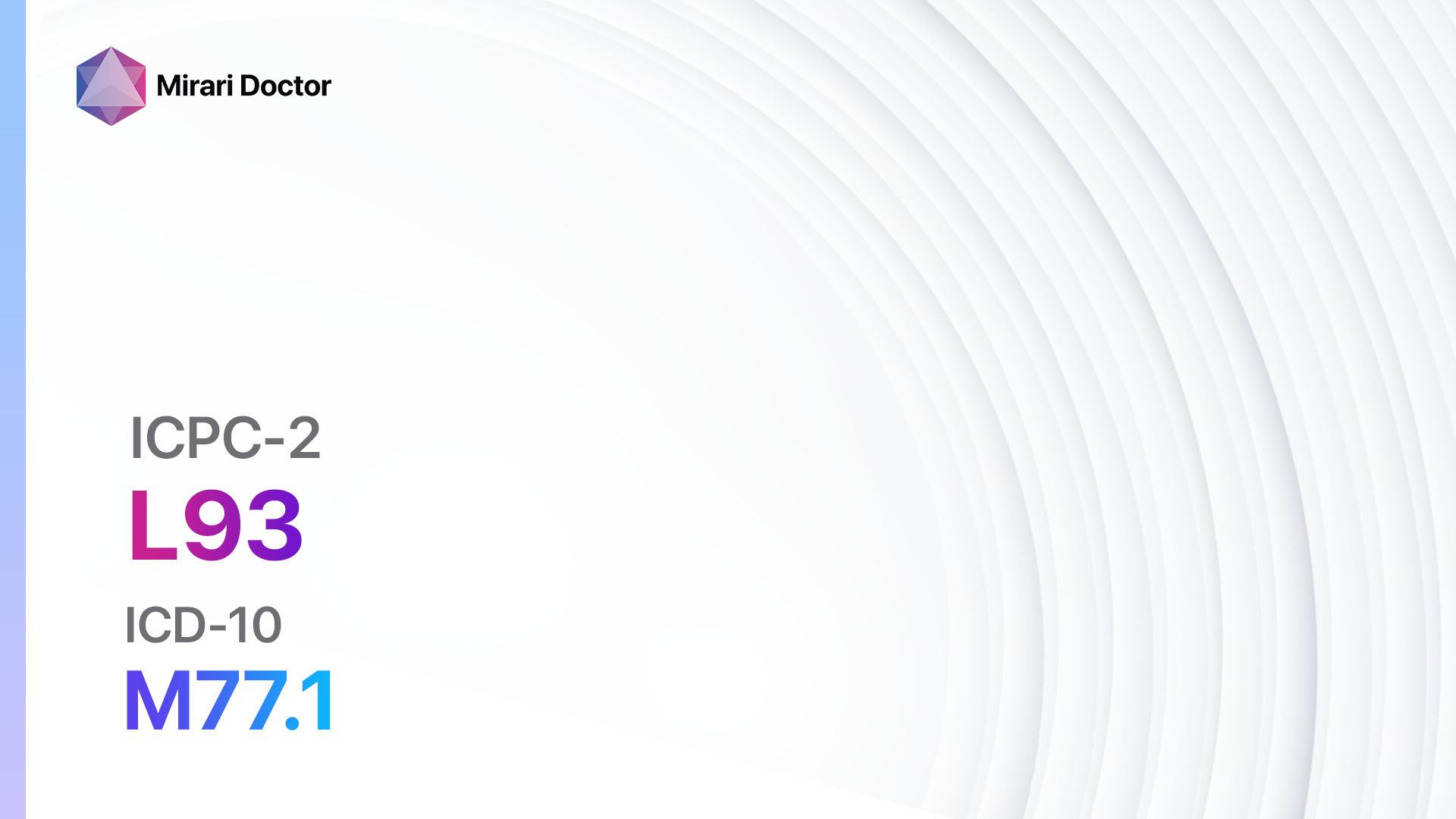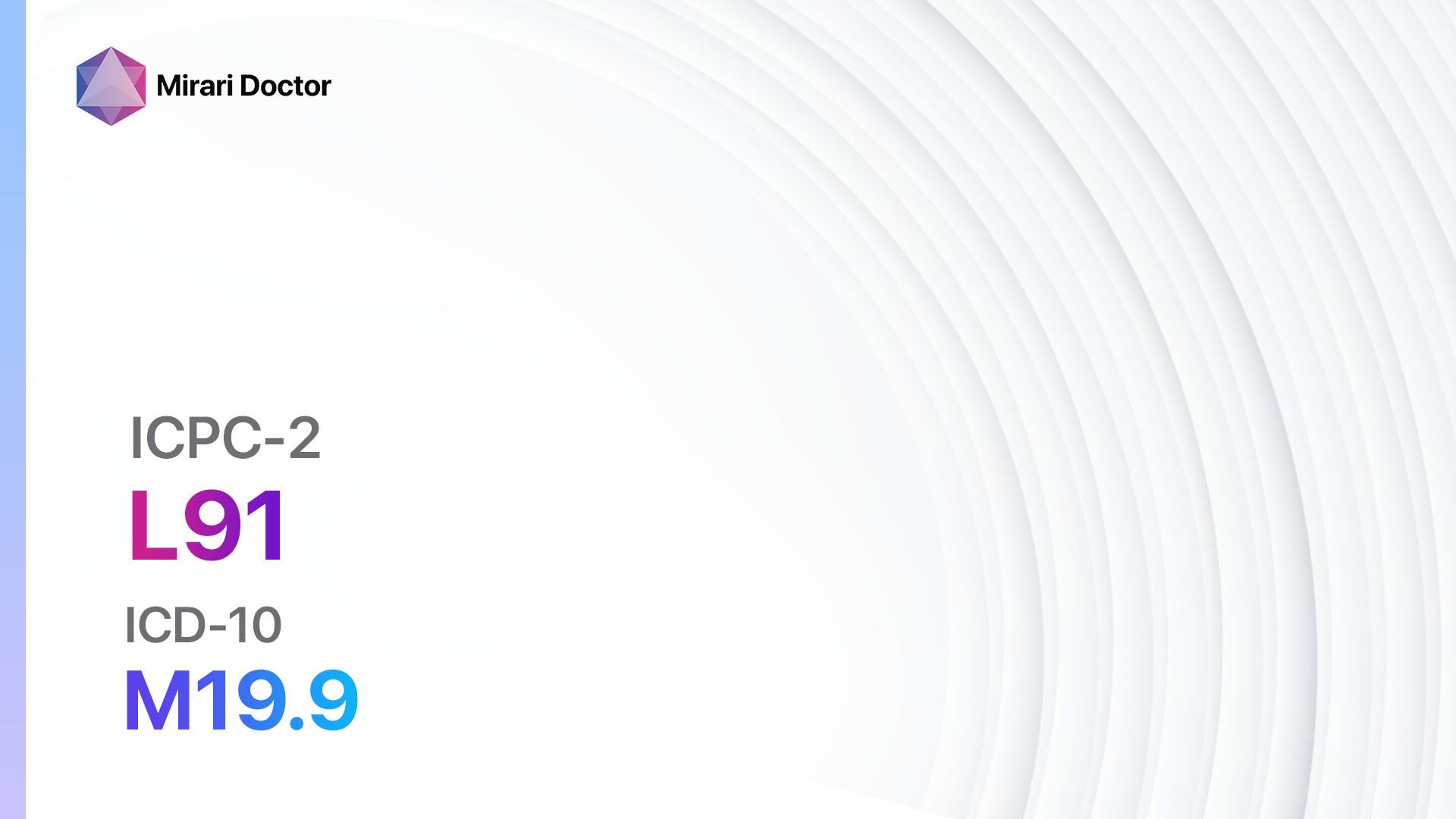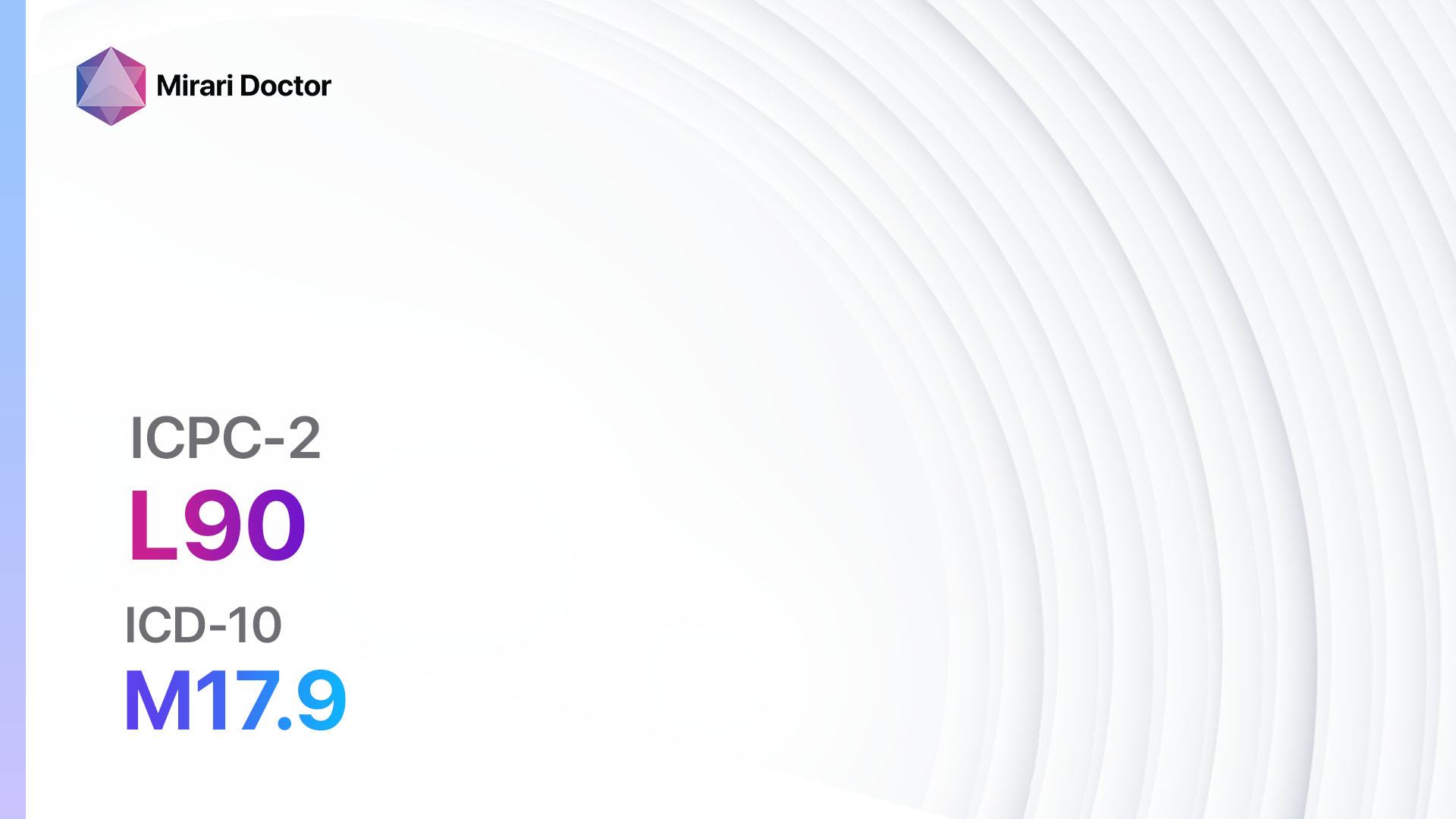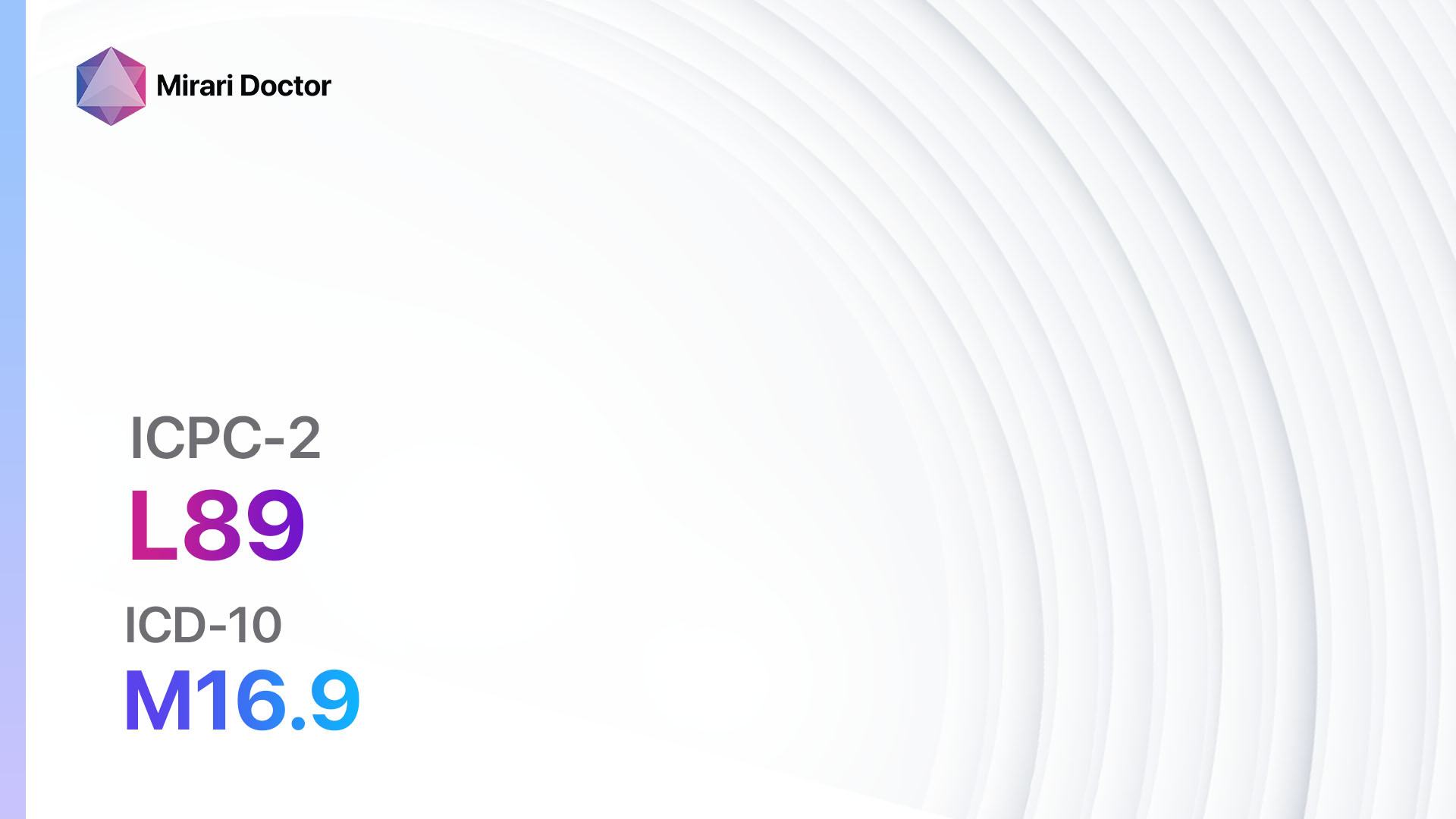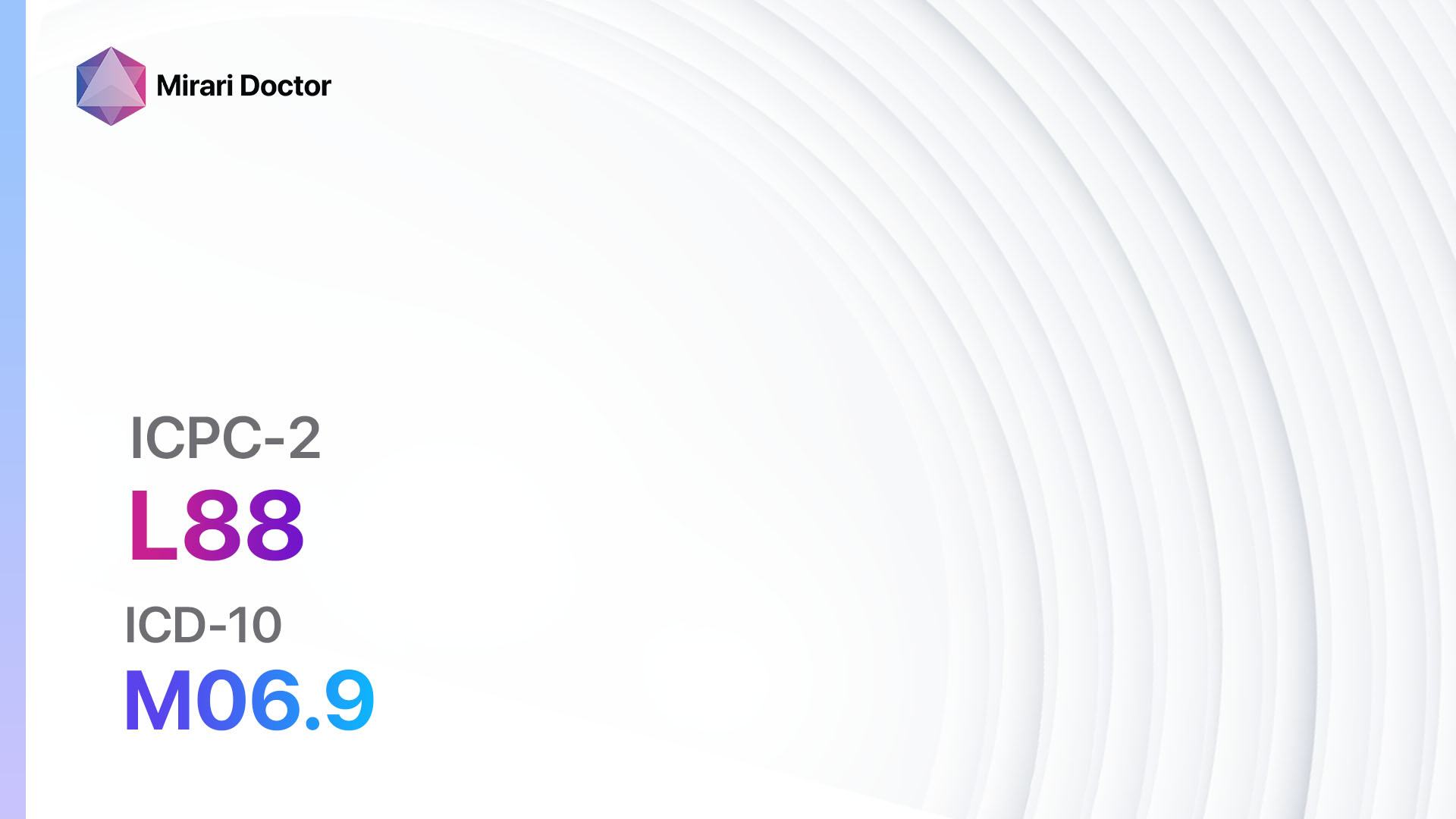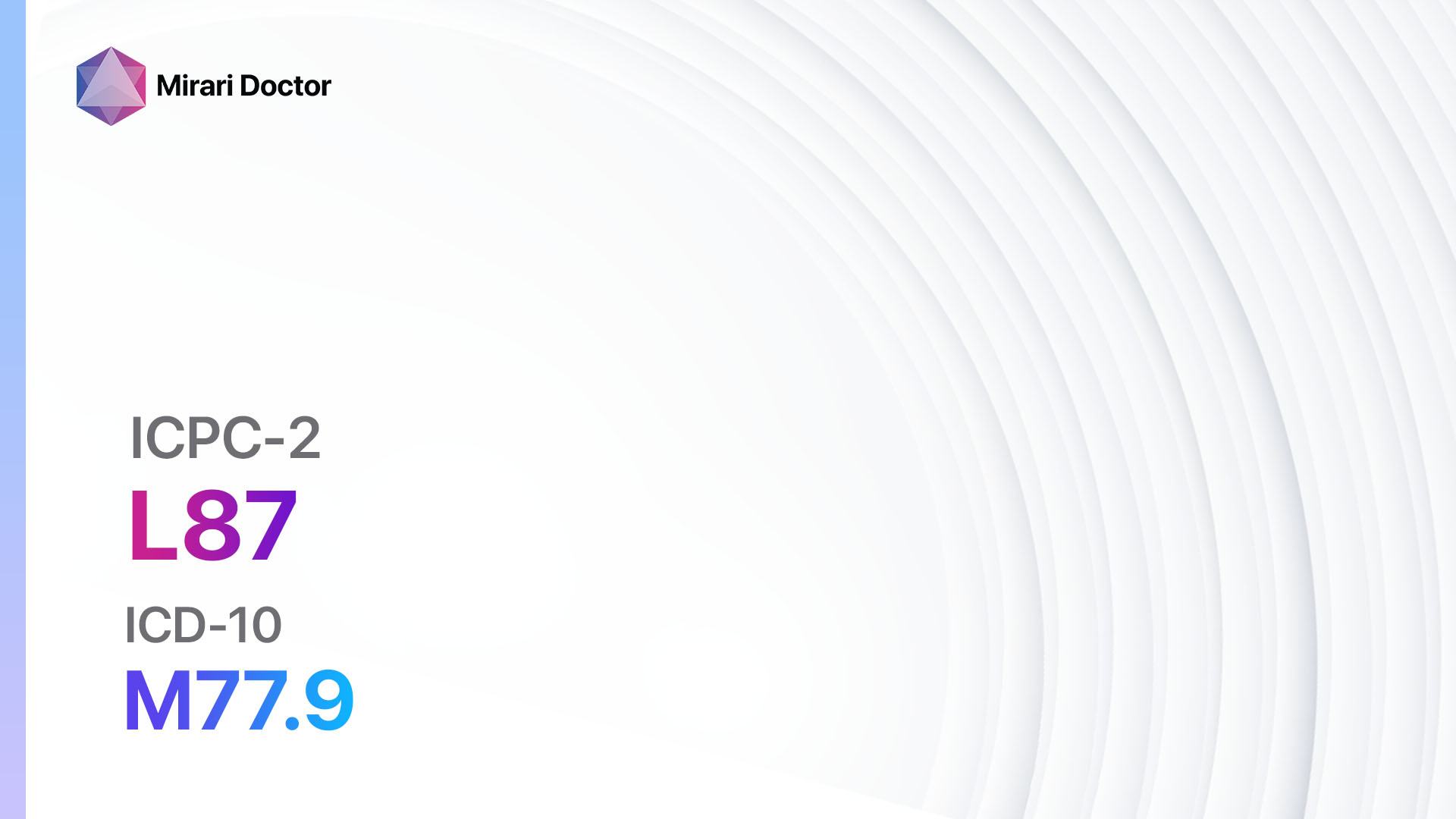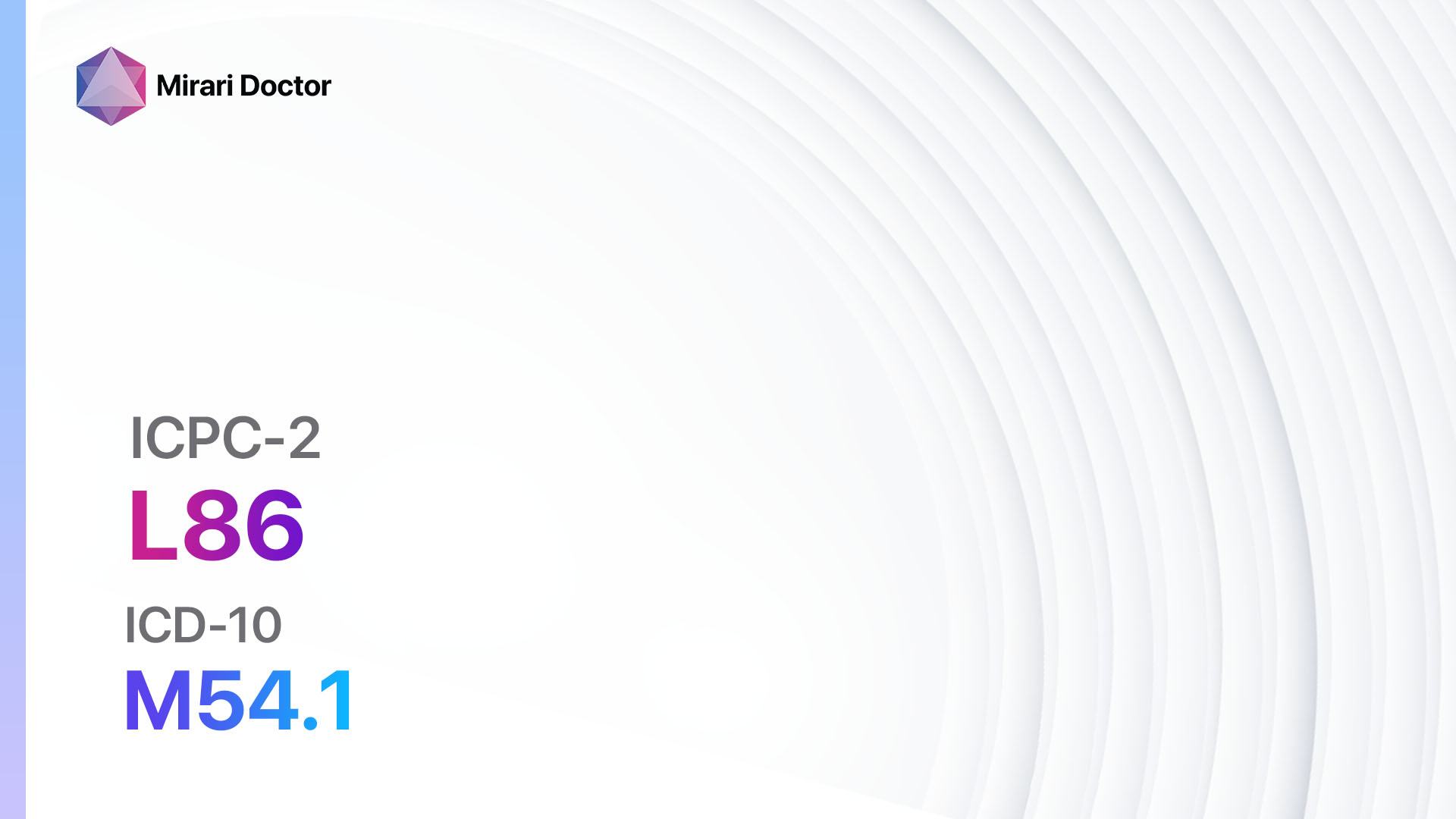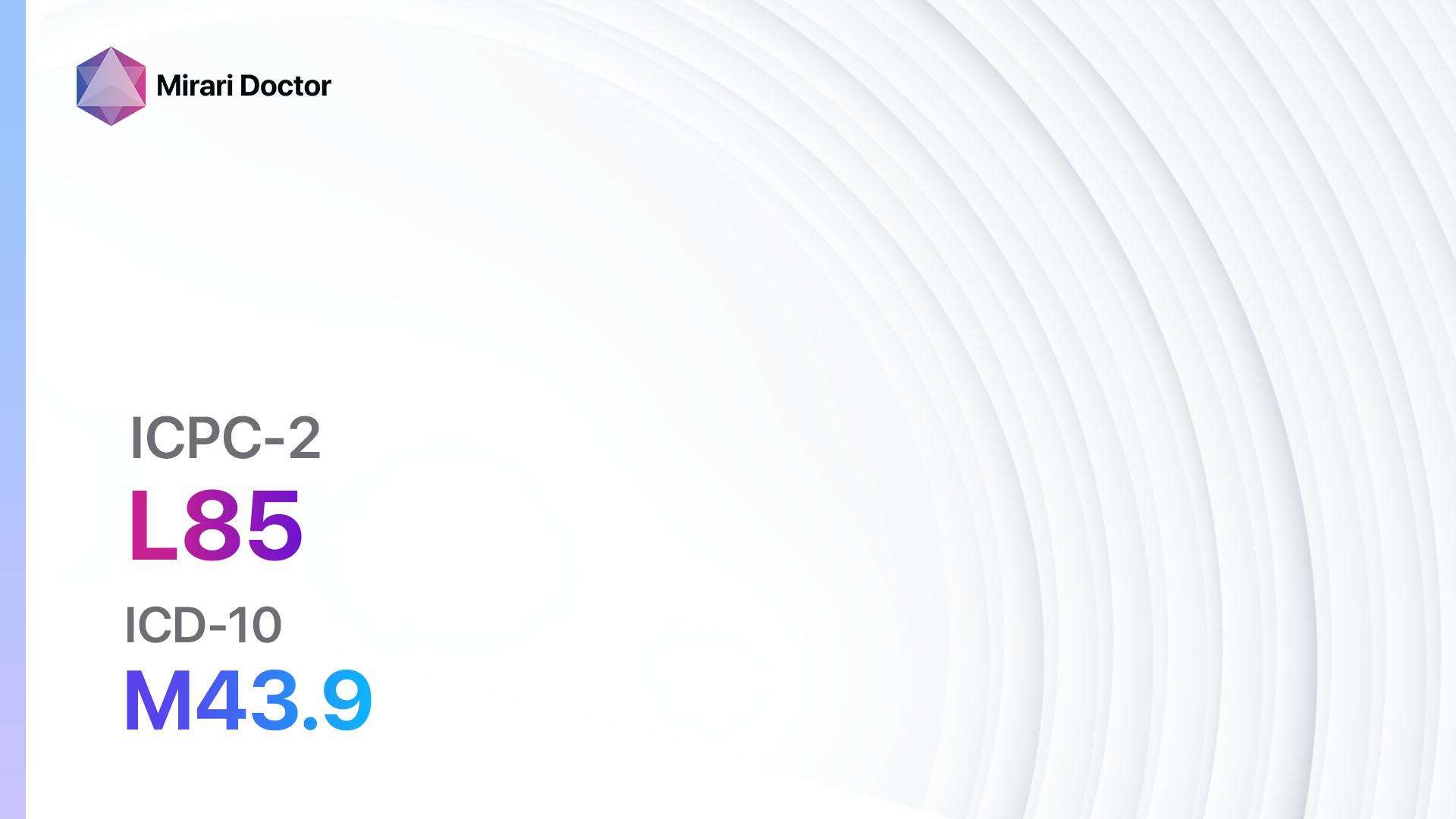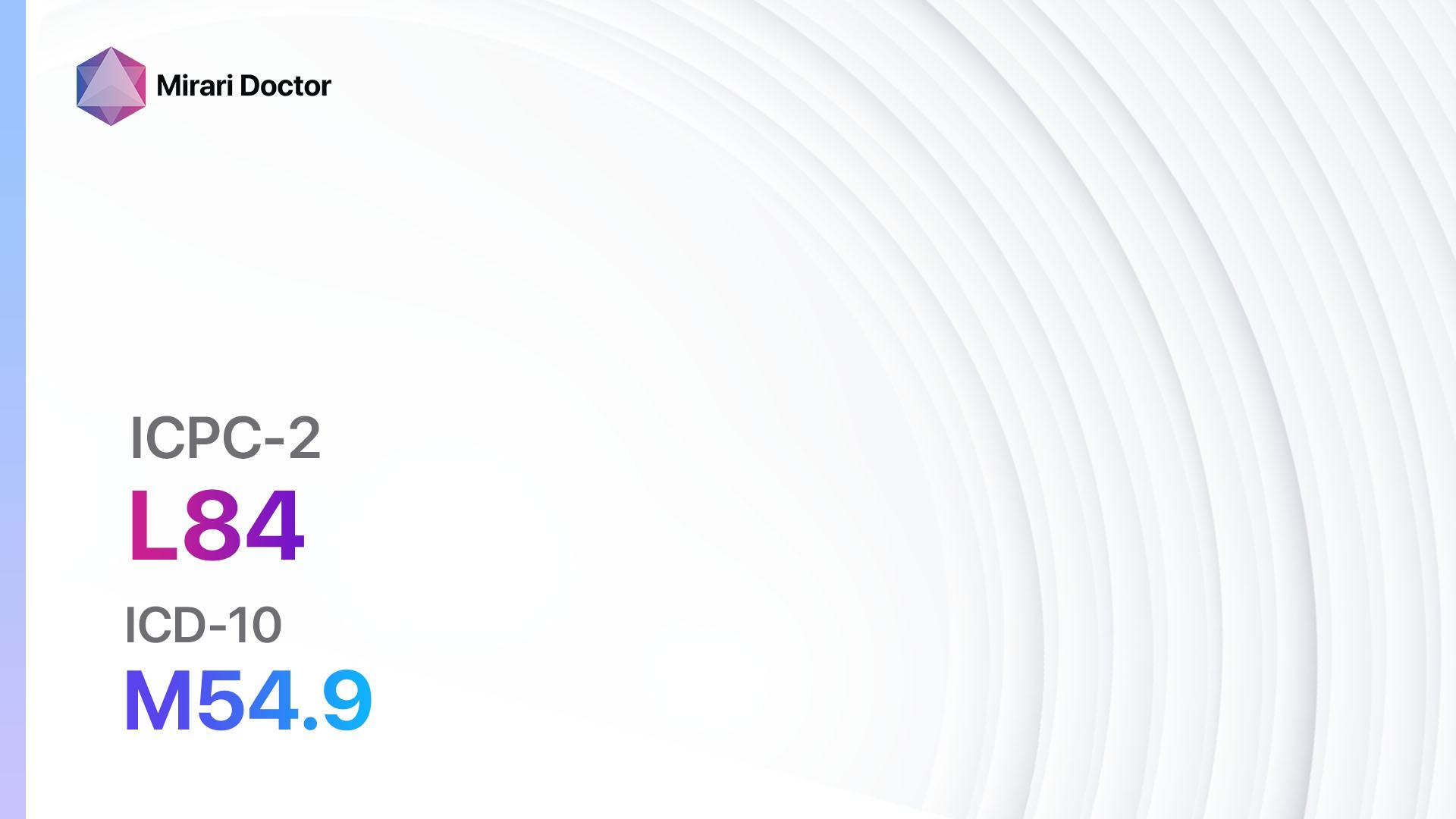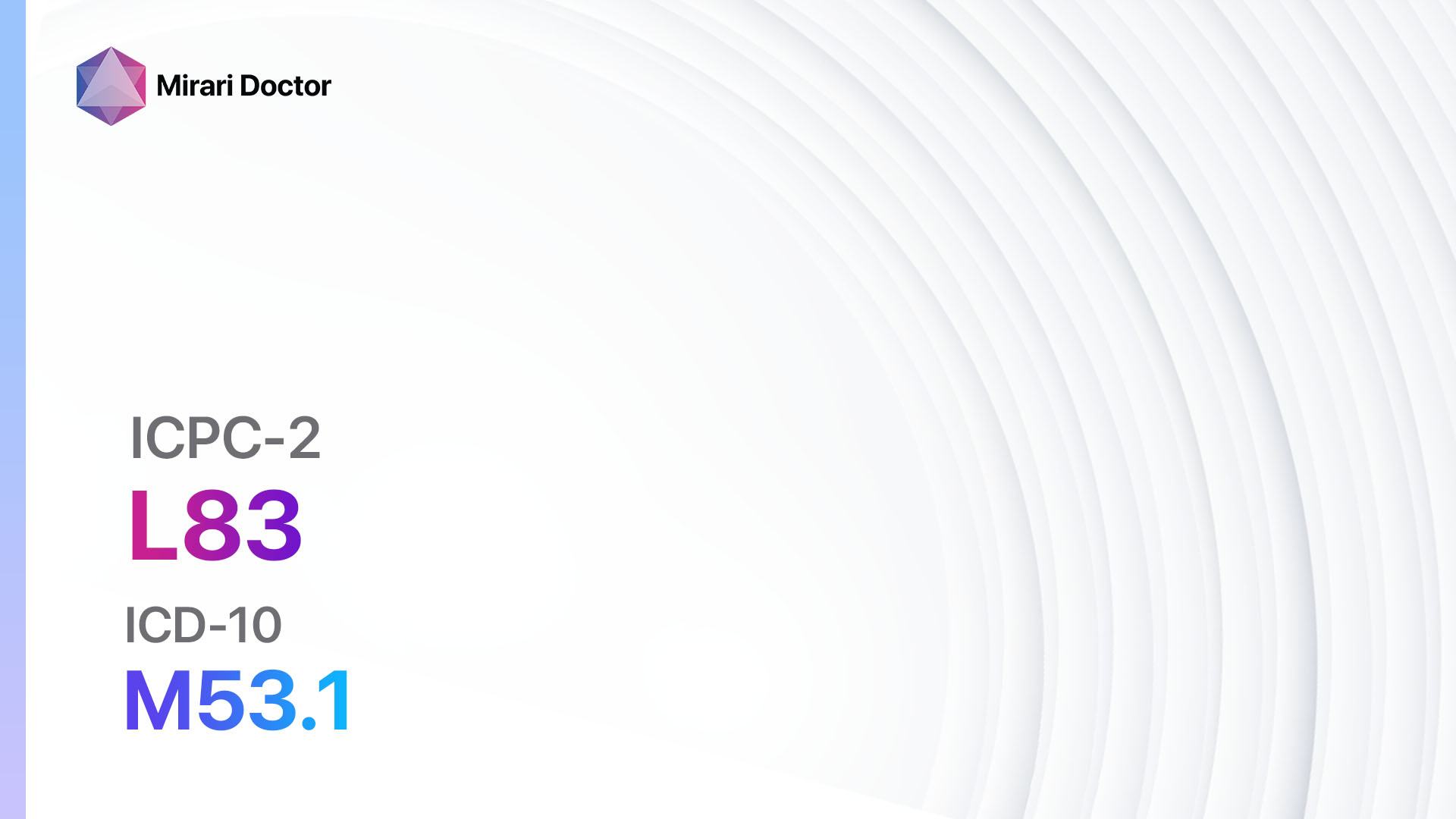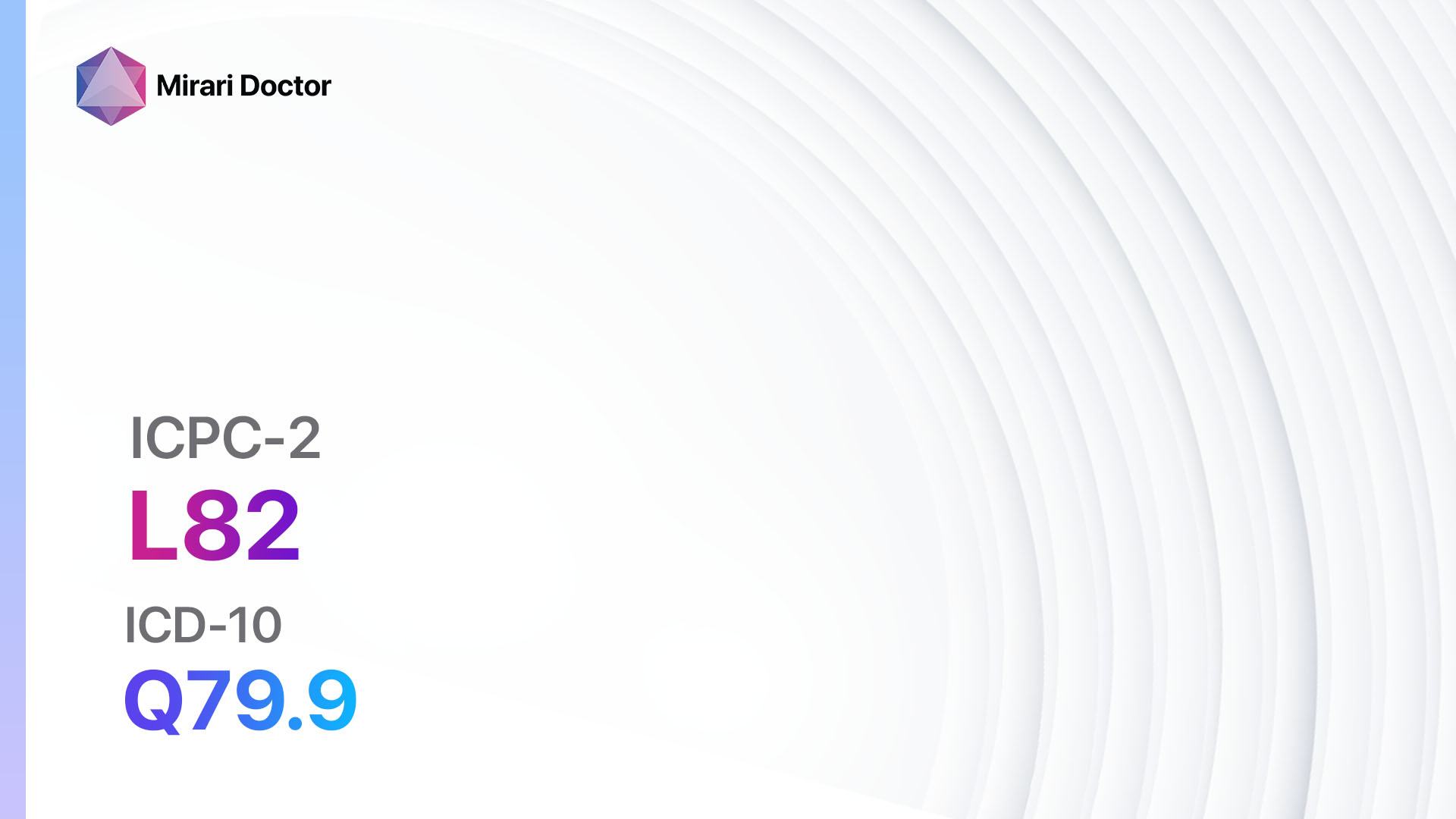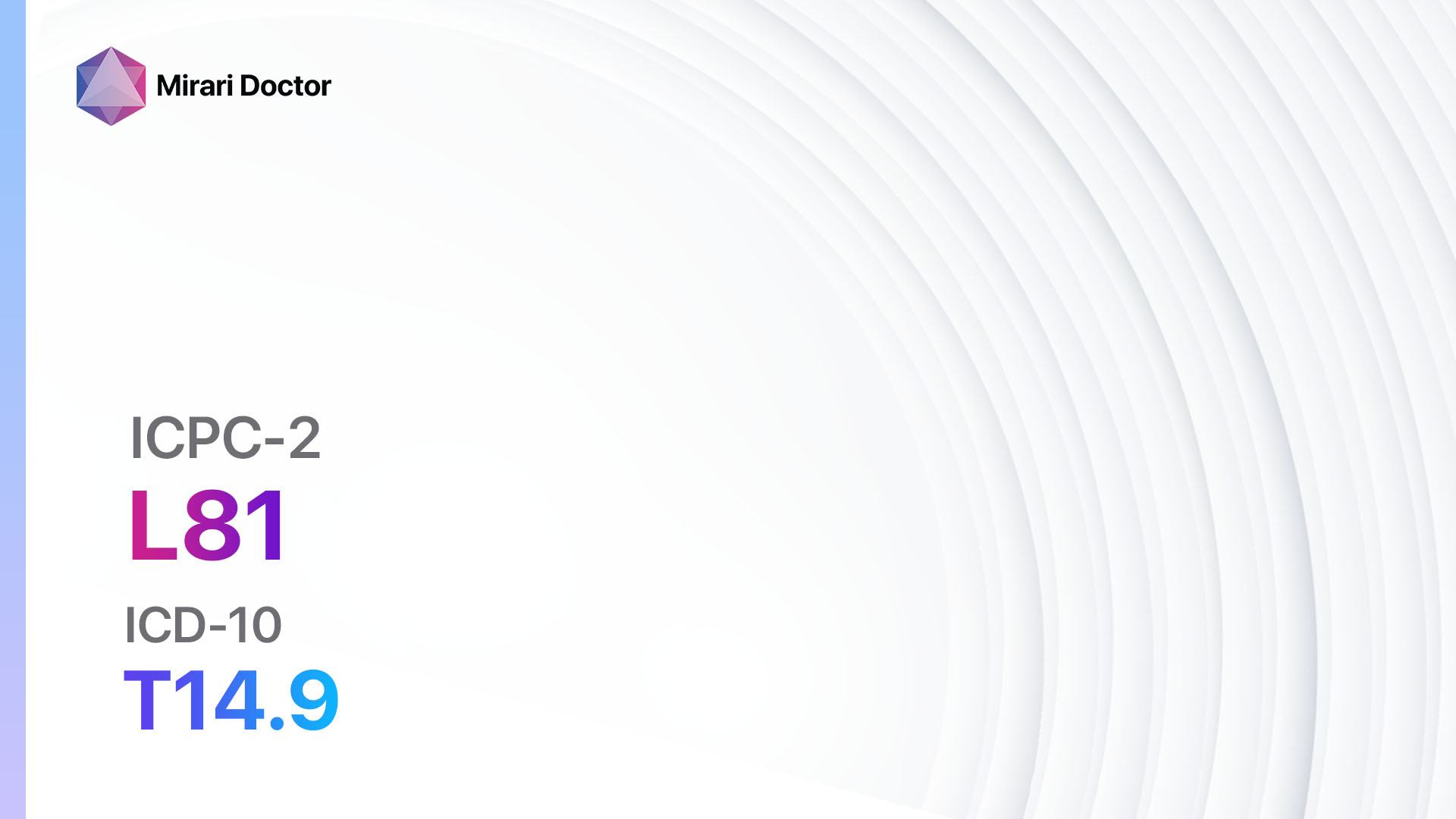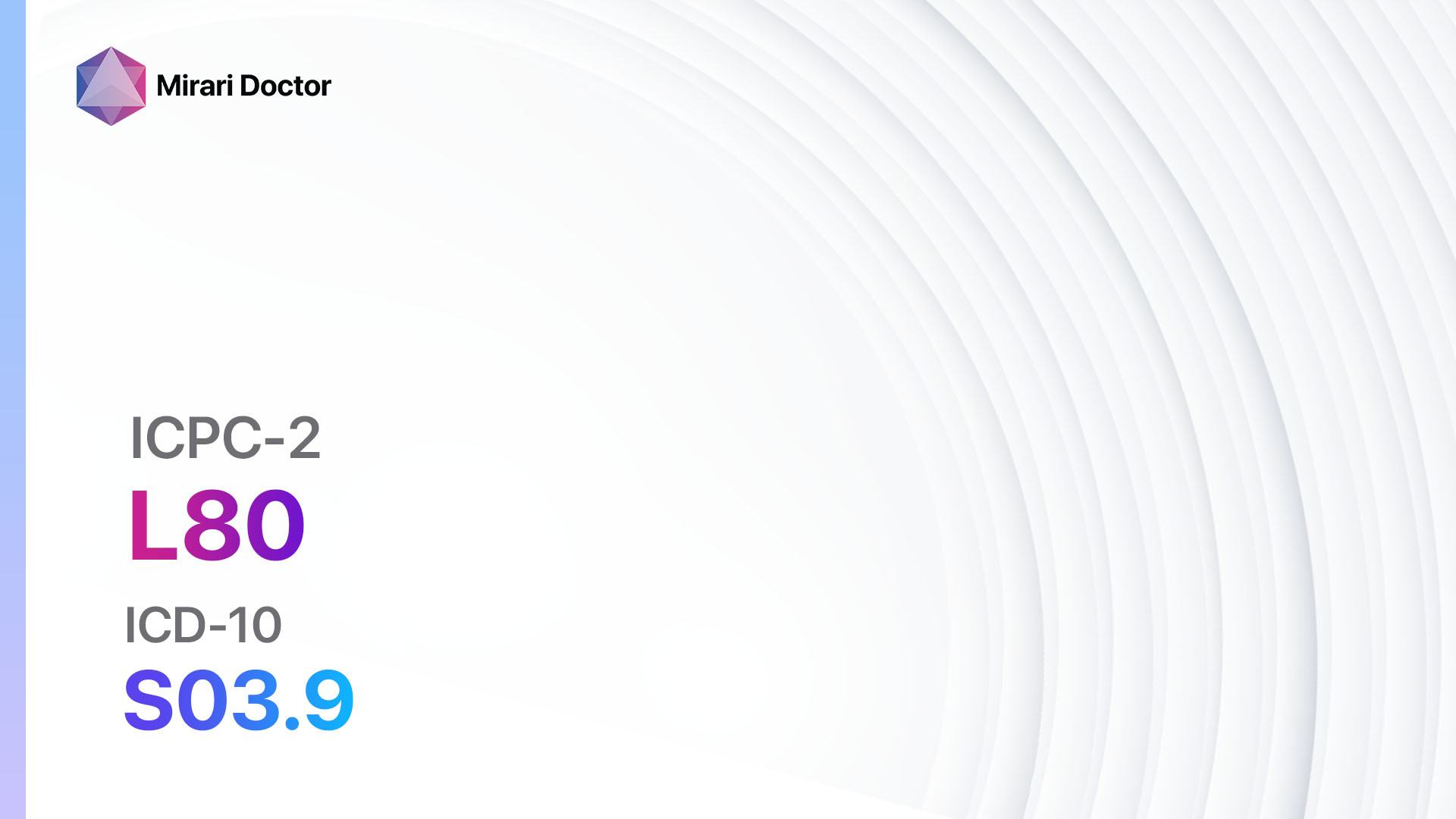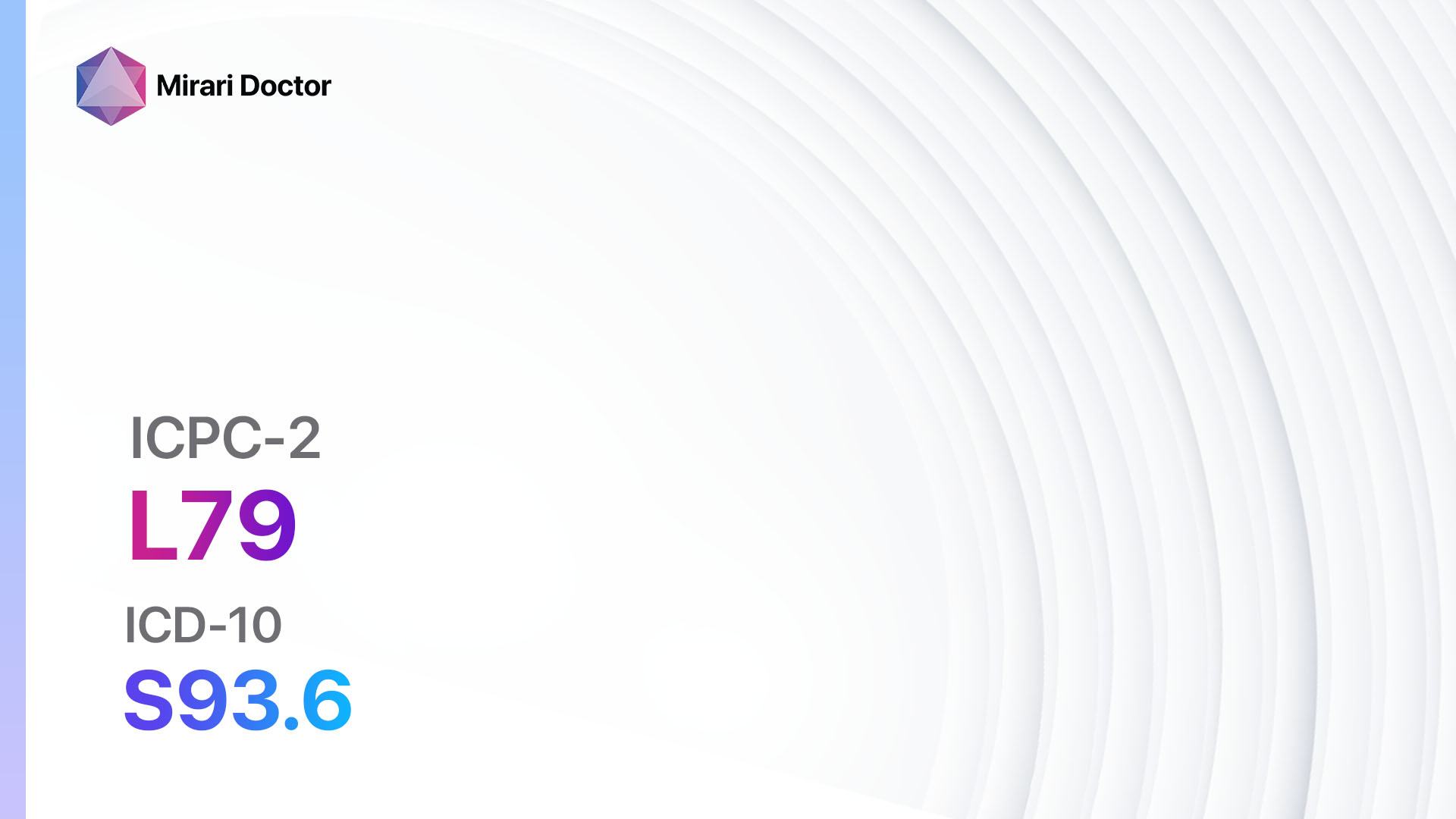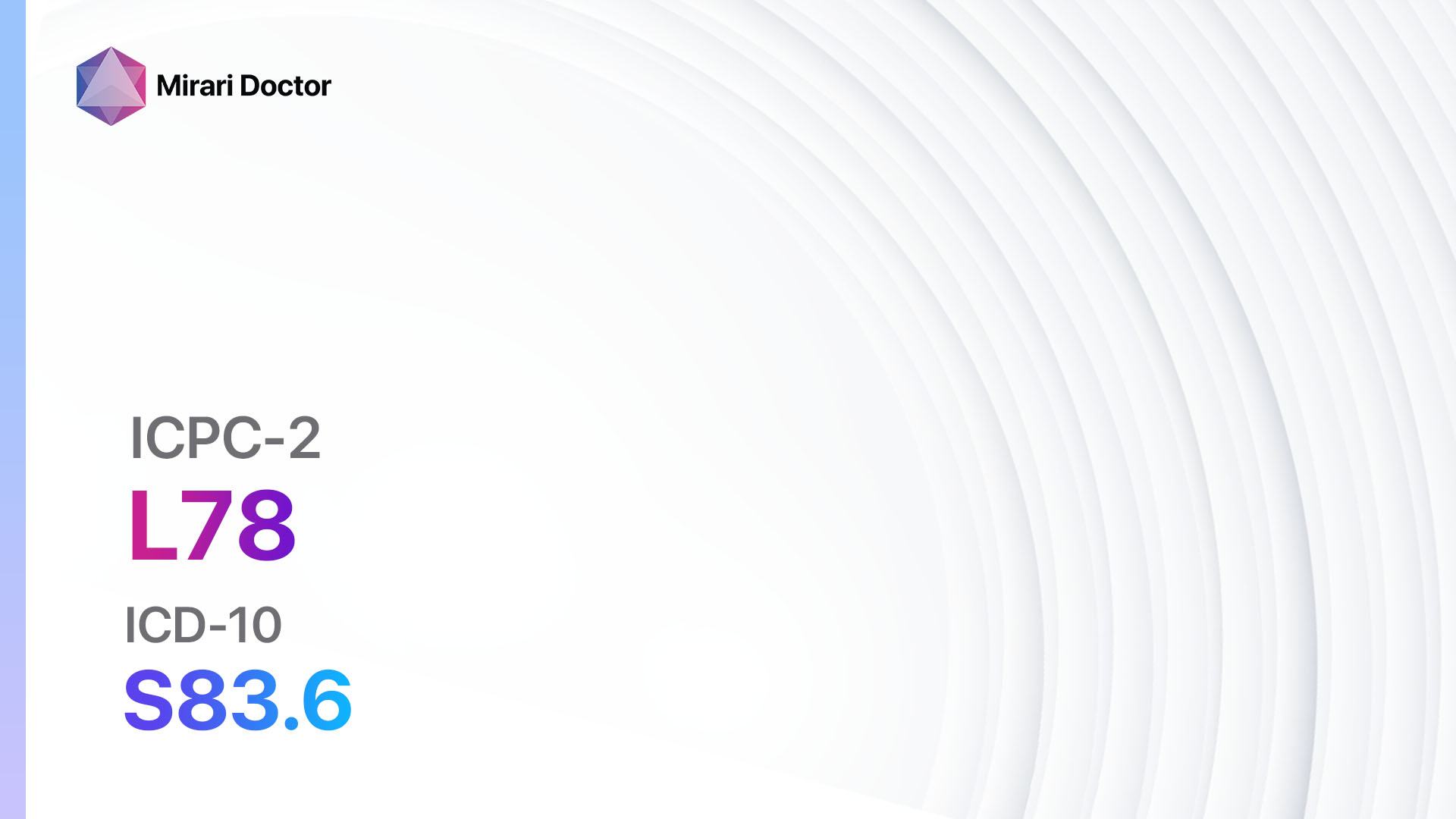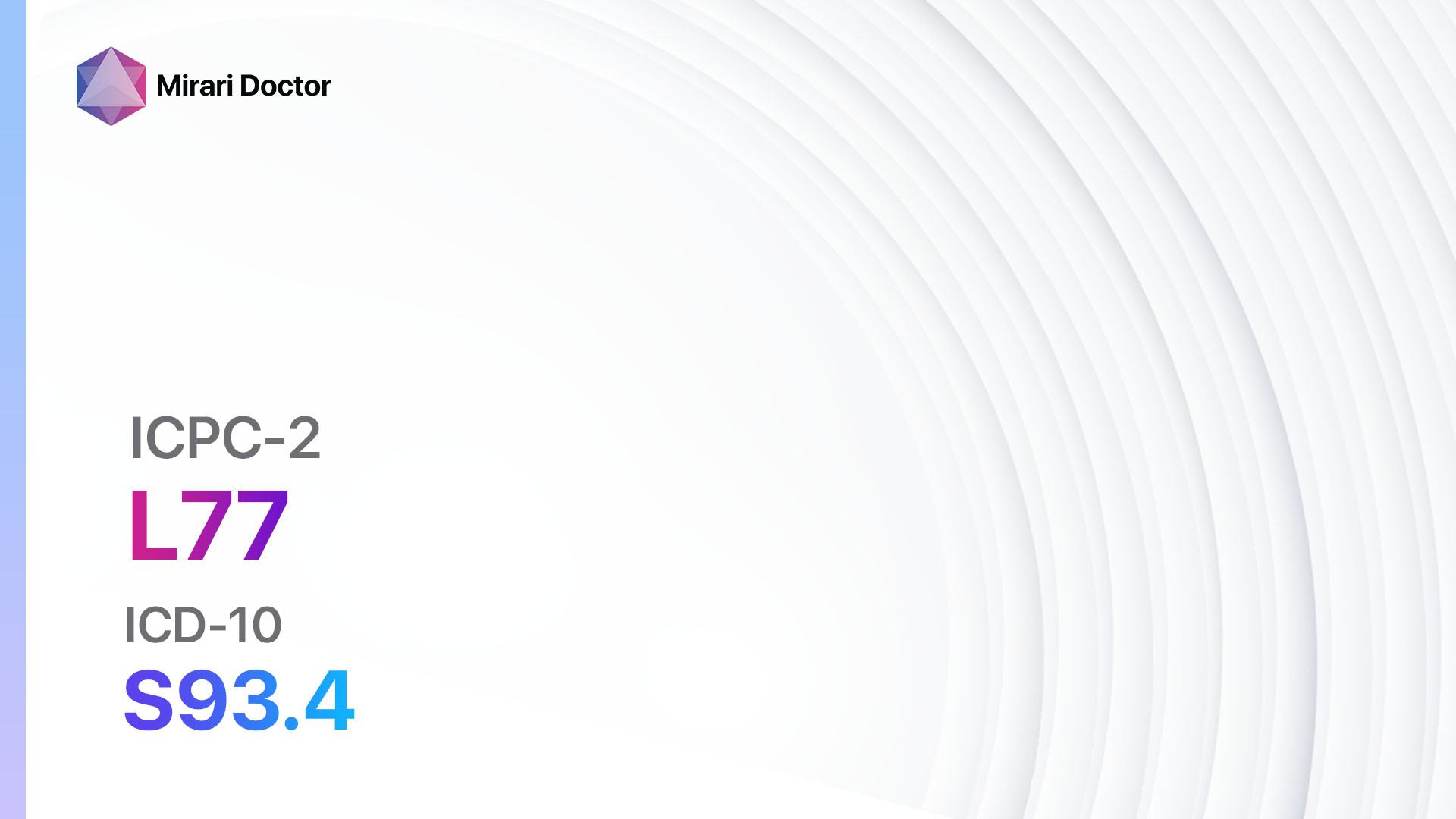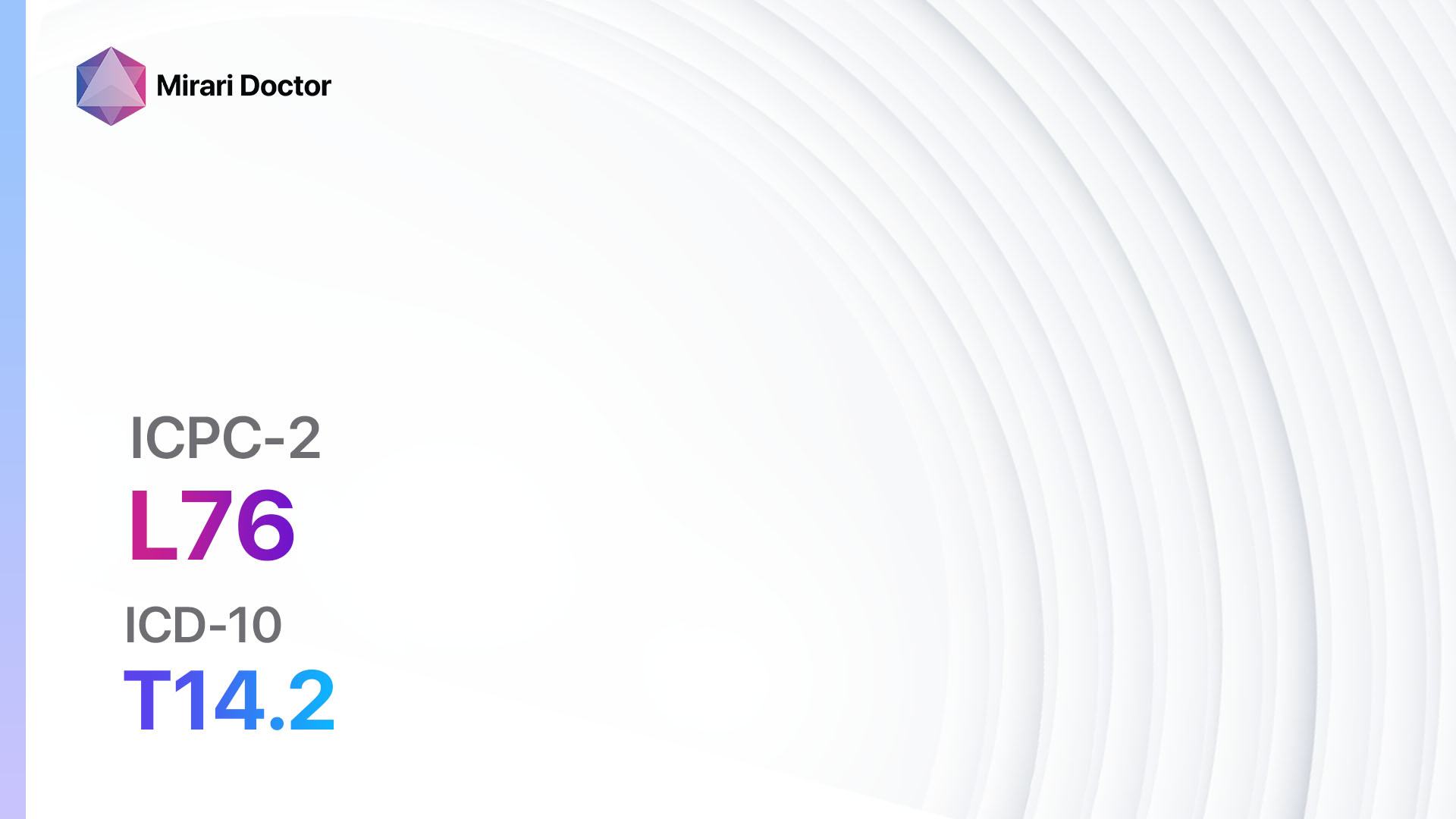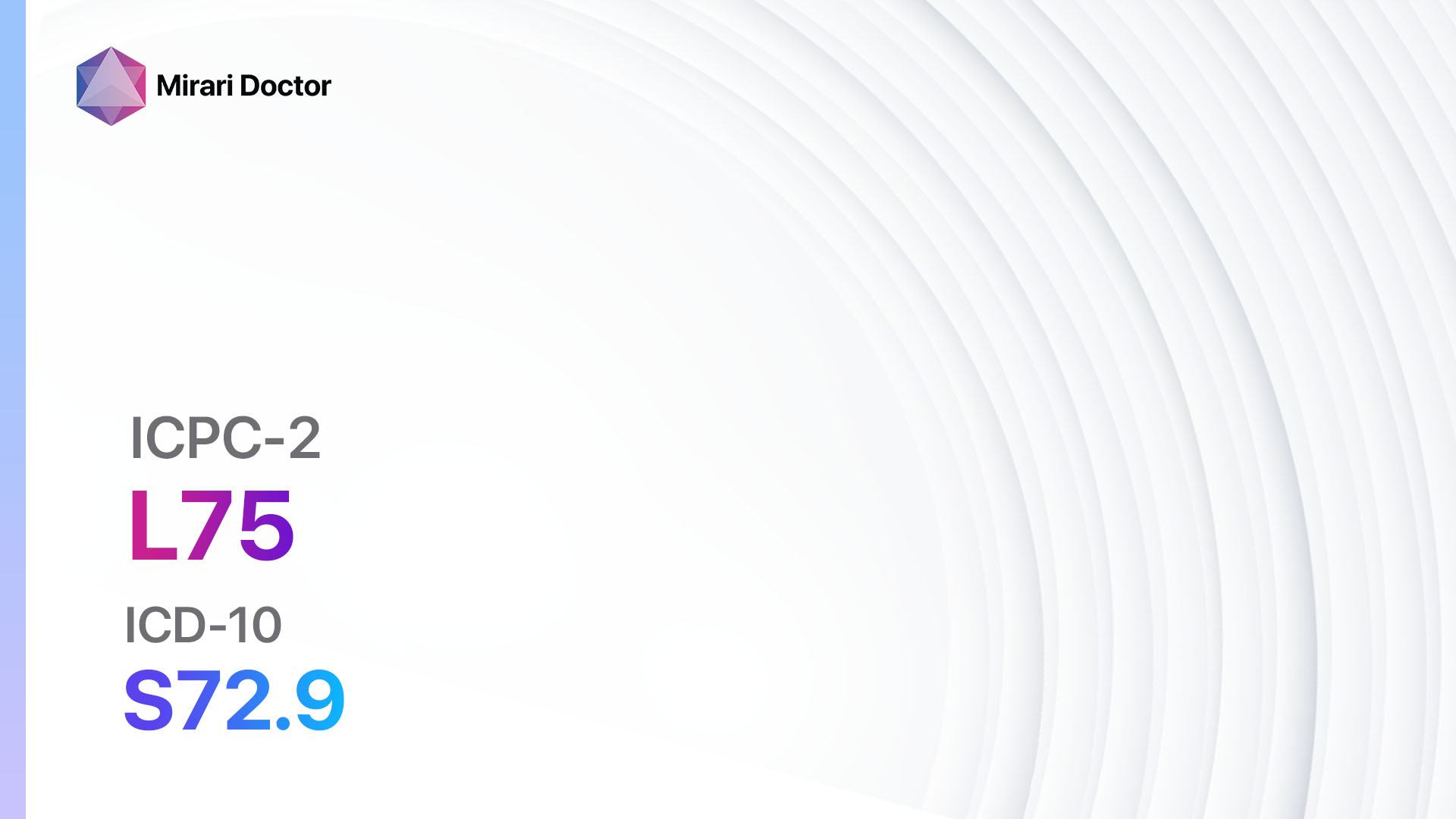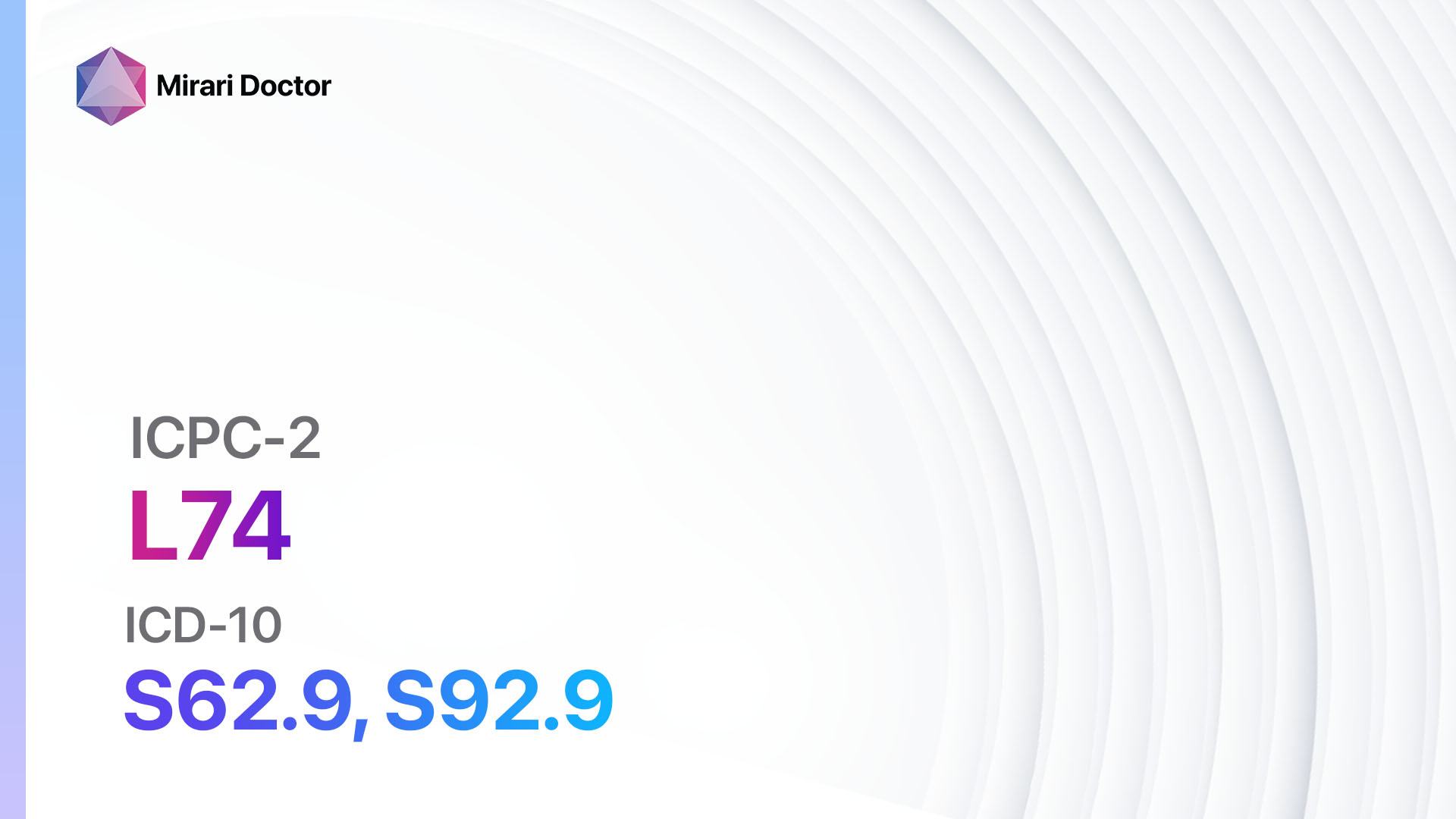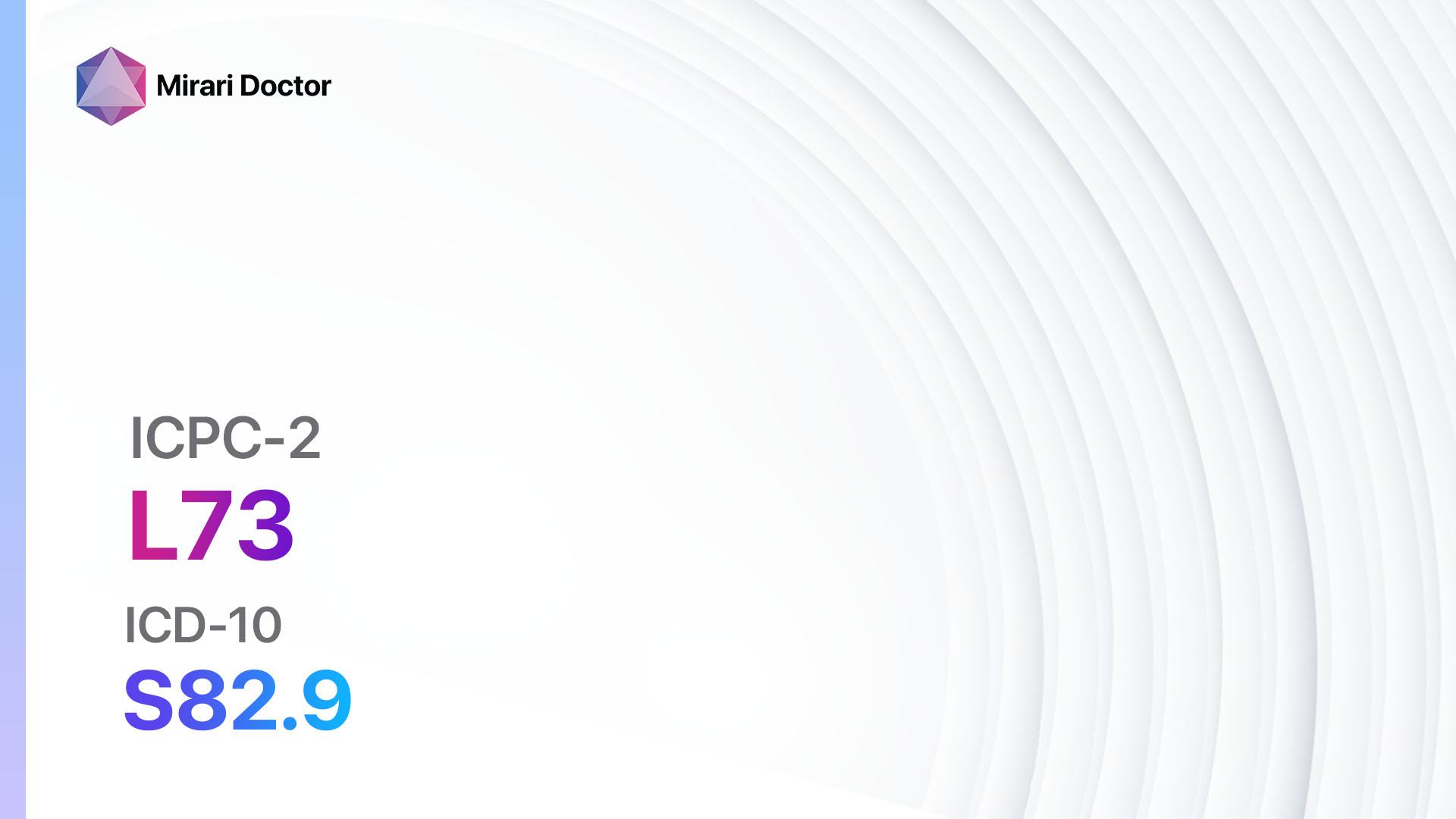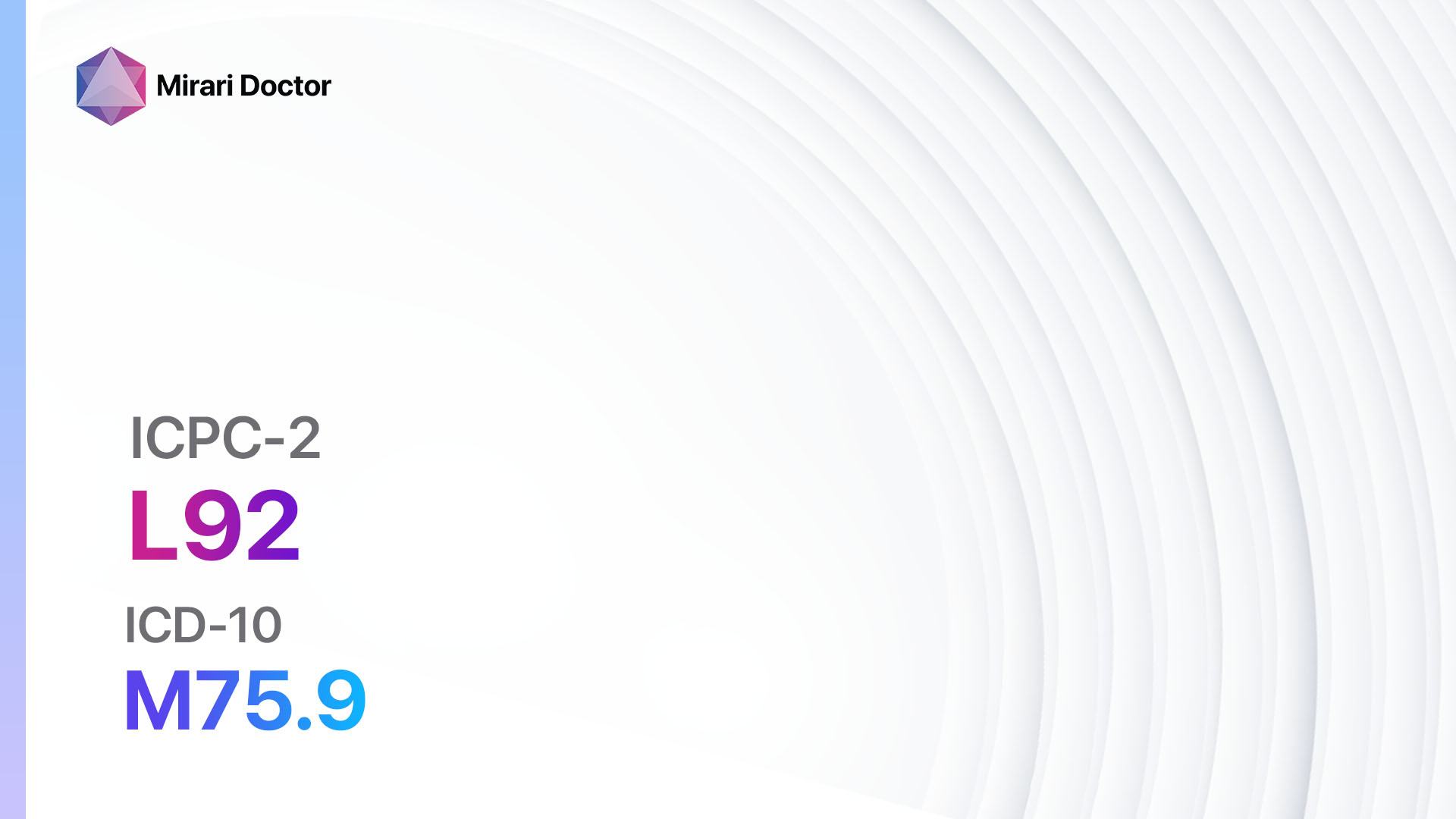
Introduction
Shoulder syndrome, also known as shoulder impingement syndrome, is a common condition characterized by pain and limited range of motion in the shoulder joint. It occurs when the tendons of the rotator cuff muscles become irritated or inflamed as they pass through the subacromial space.[1] This guide aims to provide healthcare professionals with a comprehensive approach to diagnosing and managing shoulder syndrome.
Codes
Symptoms
- Shoulder pain: Patients typically experience pain in the front or side of the shoulder, which may radiate down the arm.[4]
- Limited range of motion: Patients may have difficulty lifting their arm or reaching behind their back.[4]
- Weakness: Weakness in the affected shoulder may be present, making it difficult to perform certain activities.[4]
Causes
- Repetitive overhead activities: Activities that involve repetitive overhead movements, such as throwing or swimming, can lead to shoulder impingement.[5]
- Poor posture: Slouching or hunching the shoulders forward can narrow the subacromial space and increase the risk of impingement.[5]
- Muscle imbalances: Weakness or tightness in certain muscles around the shoulder can alter the mechanics of the joint and contribute to impingement.[5]
Diagnostic Steps
Medical History
- Gather information about the patient’s occupation, hobbies, and activities that may contribute to shoulder impingement.
- Ask about the onset, duration, and location of the pain.
- Inquire about any previous shoulder injuries or surgeries.
- Assess for any underlying medical conditions that may predispose the patient to shoulder impingement, such as rheumatoid arthritis or diabetes.[6]
Physical Examination
- Perform a thorough examination of the shoulder joint, including inspection, palpation, and range of motion assessment.
- Look for signs of inflammation, such as redness or swelling.
- Palpate the shoulder joint and surrounding structures for tenderness or deformities.
- Evaluate the patient’s range of motion, strength, and stability of the shoulder joint.
- Perform specific tests, such as the Neer test and Hawkins-Kennedy test, to assess for impingement.[7]
Laboratory Tests
- No specific laboratory tests are required for the diagnosis of shoulder impingement syndrome.
Diagnostic Imaging
- X-rays: X-rays can help rule out other causes of shoulder pain, such as fractures or arthritis.
- Ultrasound: Ultrasound can provide real-time imaging of the shoulder structures and help identify any abnormalities.
- MRI: MRI can provide detailed images of the soft tissues in the shoulder, including the tendons and ligaments.[8]
Other Tests
- Electromyography (EMG): EMG can help assess the function of the muscles around the shoulder joint and identify any nerve involvement.[9]
- Arthroscopy: Arthroscopy may be performed if conservative treatments fail to improve symptoms. It allows for direct visualization of the shoulder joint and can be used for both diagnosis and treatment.[10]
Follow-up and Patient Education
- Schedule regular follow-up appointments to monitor the patient’s progress and adjust the treatment plan if necessary.
- Provide patient education on proper posture, ergonomics, and exercises to improve shoulder strength and flexibility.
- Encourage the patient to avoid activities that exacerbate their symptoms and to modify their technique if necessary.
Possible Interventions
Traditional Interventions
Medications:
Top 5 drugs for Shoulder Syndrome:
- Nonsteroidal anti-inflammatory drugs (NSAIDs) (e.g., Ibuprofen, Naproxen):
- Cost: Generic versions can be $3-$20/month.
- Contraindications: History of gastrointestinal bleeding, renal impairment.
- Side effects: Upset stomach, heartburn, dizziness.
- Severe side effects: Gastrointestinal bleeding, kidney damage.
- Drug interactions: Anticoagulants, corticosteroids.
- Warning: Prolonged use may increase the risk of cardiovascular events.
- Corticosteroids (e.g., Prednisone, Methylprednisolone):
- Cost: Generic versions can be $4-$30/month.
- Contraindications: Active infections, uncontrolled diabetes.
- Side effects: Increased appetite, weight gain, mood changes.
- Severe side effects: Osteoporosis, adrenal suppression.
- Drug interactions: Nonsteroidal anti-inflammatory drugs (NSAIDs), anticoagulants.
- Warning: Prolonged use may lead to systemic side effects.
- Muscle relaxants (e.g., Cyclobenzaprine, Methocarbamol):
- Cost: Generic versions can be $4-$30/month.
- Contraindications: Glaucoma, urinary retention.
- Side effects: Drowsiness, dizziness, dry mouth.
- Severe side effects: Seizures, allergic reactions.
- Drug interactions: Sedatives, alcohol.
- Warning: May cause drowsiness, avoid driving or operating machinery.
- Topical analgesics (e.g., Lidocaine patches, Capsaicin cream):
- Cost: Lidocaine patches can be $10-$30/box. Capsaicin cream can be $10-$20/tube.
- Contraindications: Allergy to local anesthetics, broken skin.
- Side effects: Skin irritation, burning sensation.
- Severe side effects: Allergic reactions, skin rash.
- Drug interactions: None reported.
- Warning: Avoid contact with eyes or mucous membranes.
- Antidepressants (e.g., Amitriptyline, Duloxetine):
- Cost: Generic versions can be $4-$30/month.
- Contraindications: Recent myocardial infarction, narrow-angle glaucoma.
- Side effects: Dry mouth, drowsiness, constipation.
- Severe side effects: Suicidal thoughts, serotonin syndrome.
- Drug interactions: Monoamine oxidase inhibitors (MAOIs), other serotonergic drugs.
- Warning: May take several weeks to achieve therapeutic effect.
Alternative Drugs:
- Acetaminophen: An over-the-counter pain reliever that can be used as an alternative to NSAIDs.
- Capsaicin patches: Patches containing capsaicin, a substance found in chili peppers, can provide localized pain relief.
- Gabapentin: An anticonvulsant medication that can be used off-label for neuropathic pain associated with shoulder impingement.
- Tricyclic antidepressants: Medications such as nortriptyline or desipramine can be used for their analgesic properties in chronic pain conditions.
- Lidocaine injections: Local anesthetic injections can provide temporary pain relief.
Surgical Procedures:
- Arthroscopic subacromial decompression: In this minimally invasive procedure, the surgeon removes any bone spurs or inflamed tissue from the subacromial space to relieve impingement.
- Cost: $5,000 to $15,000.
- Contraindications: None reported.
- Side effects: Infection, bleeding, nerve injury.
- Severe side effects: Stiffness, persistent pain.
- Drug interactions: None reported.
- Warning: Rehabilitation and physical therapy are necessary post-surgery.
- Rotator cuff repair: If the rotator cuff tendons are severely damaged, surgical repair may be necessary to restore function and alleviate pain.
- Cost: $10,000 to $20,000.
- Contraindications: None reported.
- Side effects: Infection, bleeding, nerve injury.
- Severe side effects: Stiffness, persistent pain.
- Drug interactions: None reported.
- Warning: Rehabilitation and physical therapy are necessary post-surgery.
Alternative Interventions
- Physical therapy: Physical therapy can help improve shoulder strength, flexibility, and posture. Cost: $50-$150 per session.
- Acupuncture: May help reduce pain and improve shoulder function. Cost: $60-$120 per session.
- Massage therapy: Can help relax muscles and improve blood flow to the shoulder. Cost: $50-$100 per session.
- Chiropractic care: May help improve shoulder alignment and reduce pain. Cost: $50-$150 per session.
- Transcutaneous electrical nerve stimulation (TENS): Involves the use of low-voltage electrical currents to relieve pain. Cost: $50-$100 per session.
Lifestyle Interventions
- Rest and activity modification: Resting the shoulder and avoiding activities that exacerbate symptoms can help reduce pain and inflammation.
- Posture correction: Encourage the patient to maintain good posture and avoid slouching or hunching the shoulders forward.
- Exercise and stretching: Prescribe specific exercises and stretches to improve shoulder strength, flexibility, and stability.
- Heat and cold therapy: Applying heat or cold packs to the shoulder can help reduce pain and inflammation.
- Weight management: Excess weight can put additional stress on the shoulder joint, so weight loss may be beneficial.
It is important to note that the cost ranges provided are approximate and may vary depending on the location and availability of the interventions.
Mirari Cold Plasma Alternative Intervention
Understanding Mirari Cold Plasma
- Safe and Non-Invasive Treatment: Mirari Cold Plasma is a safe and non-invasive treatment option for various skin conditions. It does not require incisions, minimizing the risk of scarring, bleeding, or tissue damage.
- Efficient Extraction of Foreign Bodies: Mirari Cold Plasma facilitates the removal of foreign bodies from the skin by degrading and dissociating organic matter, allowing easier access and extraction.
- Pain Reduction and Comfort: Mirari Cold Plasma has a local analgesic effect, providing pain relief during the treatment, making it more comfortable for the patient.
- Reduced Risk of Infection: Mirari Cold Plasma has antimicrobial properties, effectively killing bacteria and reducing the risk of infection.
- Accelerated Healing and Minimal Scarring: Mirari Cold Plasma stimulates wound healing and tissue regeneration, reducing healing time and minimizing the formation of scars.
Mirari Cold Plasma Prescription
Video instructions for using Mirari Cold Plasma Device – L92 Shoulder syndrome (ICD-10:M75.9)
| Mild | Moderate | Severe |
| Mode setting: 2 (Wound Healing) Location: 0 (Localized) Morning: 15 minutes, Evening: 15 minutes |
Mode setting: 2 (Wound Healing) Location: 0 (Localized) Morning: 30 minutes, Lunch: 30 minutes, Evening: 30 minutes |
Mode setting: 2 (Wound Healing) Location: 0 (Localized) Morning: 30 minutes, Lunch: 30 minutes, Evening: 30 minutes |
| Mode setting: 9 (Arthritis) Location: 0 (Localized) Morning: 15 minutes, Evening: 15 minutes |
Mode setting: 9 (Arthritis) Location: 0 (Localized) Morning: 30 minutes, Lunch: 30 minutes, Evening: 30 minutes |
Mode setting: 9 (Arthritis) Location: 0 (Localized) Morning: 30 minutes, Lunch: 30 minutes, Evening: 30 minutes |
| Mode setting: 7 (Immunotherapy) Location: 1 (Sacrum) Morning: 15 minutes, Evening: 15 minutes |
Mode setting: 7 (Immunotherapy) Location: 1 (Sacrum) Morning: 30 minutes, Lunch: 30 minutes, Evening: 30 minutes |
Mode setting: 7 (Immunotherapy) Location: 1 (Sacrum) Morning: 30 minutes, Lunch: 30 minutes, Evening: 30 minutes |
| Total Morning: 45 minutes approx. $7.50 USD, Evening: 45 minutes approx. $7.50 USD |
Total Morning: 90 minutes approx. $15 USD, Lunch: 90 minutes approx. $15 USD, Evening: 90 minutes approx. $15 USD, |
Total Morning: 90 minutes approx. $15 USD, Lunch: 90 minutes approx. $15 USD, Evening: 90 minutes approx. $15 USD, |
| Usual treatment for 7-60 days approx. $105 USD – $900 USD | Usual treatment for 6-8 weeks approx. $1,890 USD – $2,520 USD |
Usual treatment for 3-6 months approx. $4,050 USD – $8,100 USD
|
 |
|
Use the Mirari Cold Plasma device to treat Shoulder syndrome effectively.
WARNING: MIRARI COLD PLASMA IS DESIGNED FOR THE HUMAN BODY WITHOUT ANY ARTIFICIAL OR THIRD PARTY PRODUCTS. USE OF OTHER PRODUCTS IN COMBINATION WITH MIRARI COLD PLASMA MAY CAUSE UNPREDICTABLE EFFECTS, HARM OR INJURY. PLEASE CONSULT A MEDICAL PROFESSIONAL BEFORE COMBINING ANY OTHER PRODUCTS WITH USE OF MIRARI.
Step 1: Cleanse the Skin
- Start by cleaning the affected area of the skin with a gentle cleanser or mild soap and water. Gently pat the area dry with a clean towel.
Step 2: Prepare the Mirari Cold Plasma device
- Ensure that the Mirari Cold Plasma device is fully charged or has fresh batteries as per the manufacturer’s instructions. Make sure the device is clean and in good working condition.
- Switch on the Mirari device using the power button or by following the specific instructions provided with the device.
- Some Mirari devices may have adjustable settings for intensity or treatment duration. Follow the manufacturer’s instructions to select the appropriate settings based on your needs and the recommended guidelines.
Step 3: Apply the Device
- Place the Mirari device in direct contact with the affected area of the skin. Gently glide or hold the device over the skin surface, ensuring even coverage of the area experiencing.
- Slowly move the Mirari device in a circular motion or follow a specific pattern as indicated in the user manual. This helps ensure thorough treatment coverage.
Step 4: Monitor and Assess:
- Keep track of your progress and evaluate the effectiveness of the Mirari device in managing your Shoulder syndrome. If you have any concerns or notice any adverse reactions, consult with your health care professional.
Note
This guide is for informational purposes only and should not replace the advice of a medical professional. Always consult with your healthcare provider or a qualified medical professional for personal advice, diagnosis, or treatment. Do not solely rely on the information presented here for decisions about your health. Use of this information is at your own risk. The authors of this guide, nor any associated entities or platforms, are not responsible for any potential adverse effects or outcomes based on the content.
Mirari Cold Plasma System Disclaimer
- Purpose: The Mirari Cold Plasma System is a Class 2 medical device designed for use by trained healthcare professionals. It is registered for use in Thailand and Vietnam. It is not intended for use outside of these locations.
- Informational Use: The content and information provided with the device are for educational and informational purposes only. They are not a substitute for professional medical advice or care.
- Variable Outcomes: While the device is approved for specific uses, individual outcomes can differ. We do not assert or guarantee specific medical outcomes.
- Consultation: Prior to utilizing the device or making decisions based on its content, it is essential to consult with a Certified Mirari Tele-Therapist and your medical healthcare provider regarding specific protocols.
- Liability: By using this device, users are acknowledging and accepting all potential risks. Neither the manufacturer nor the distributor will be held accountable for any adverse reactions, injuries, or damages stemming from its use.
- Geographical Availability: This device has received approval for designated purposes by the Thai and Vietnam FDA. As of now, outside of Thailand and Vietnam, the Mirari Cold Plasma System is not available for purchase or use.
References
- Singh B, Bakti N, Gulihar A. Current Concepts in the Diagnosis and Treatment of Shoulder Impingement. Indian J Orthop. 2017;51(5):516-523.
- World Health Organization. International Classification of Primary Care, Second edition (ICPC-2).
- World Health Organization. International Statistical Classification of Diseases and Related Health Problems 10th Revision (ICD-10).
- Umer M, Qadir I, Azam M. Subacromial impingement syndrome. Orthop Rev (Pavia). 2012;4(2):e18.
- Garving C, Jakob S, Bauer I, Nadjar R, Brunner UH. Impingement Syndrome of the Shoulder. Dtsch Arztebl Int. 2017;114(45):765-776.
- Cools AM, Michener LA. Shoulder pain: can one label satisfy everyone and everything? Br J Sports Med. 2017;51(5):416-417.
- Hegedus EJ, Goode AP, Cook CE, et al. Which physical examination tests provide clinicians with the most value when examining the shoulder? Update of a systematic review with meta-analysis of individual tests. Br J Sports Med. 2012;46(14):964-978.
- Roy JS, Braën C, Leblond J, et al. Diagnostic accuracy of ultrasonography, MRI and MR arthrography in the characterisation of rotator cuff disorders: a systematic review and meta-analysis. Br J Sports Med. 2015;49(20):1316-1328.
- Chowdhury RH, Reaz MB, Ali MA, Bakar AA, Chellappan K, Chang TG. Surface electromyography signal processing and classification techniques. Sensors (Basel). 2013;13(9):12431-12466.
- Paavola M, Malmivaara A, Taimela S, et al. Subacromial decompression versus diagnostic arthroscopy for shoulder impingement: randomised, placebo surgery controlled clinical trial. BMJ. 2018;362:k2860.
Related articles
Made in USA


